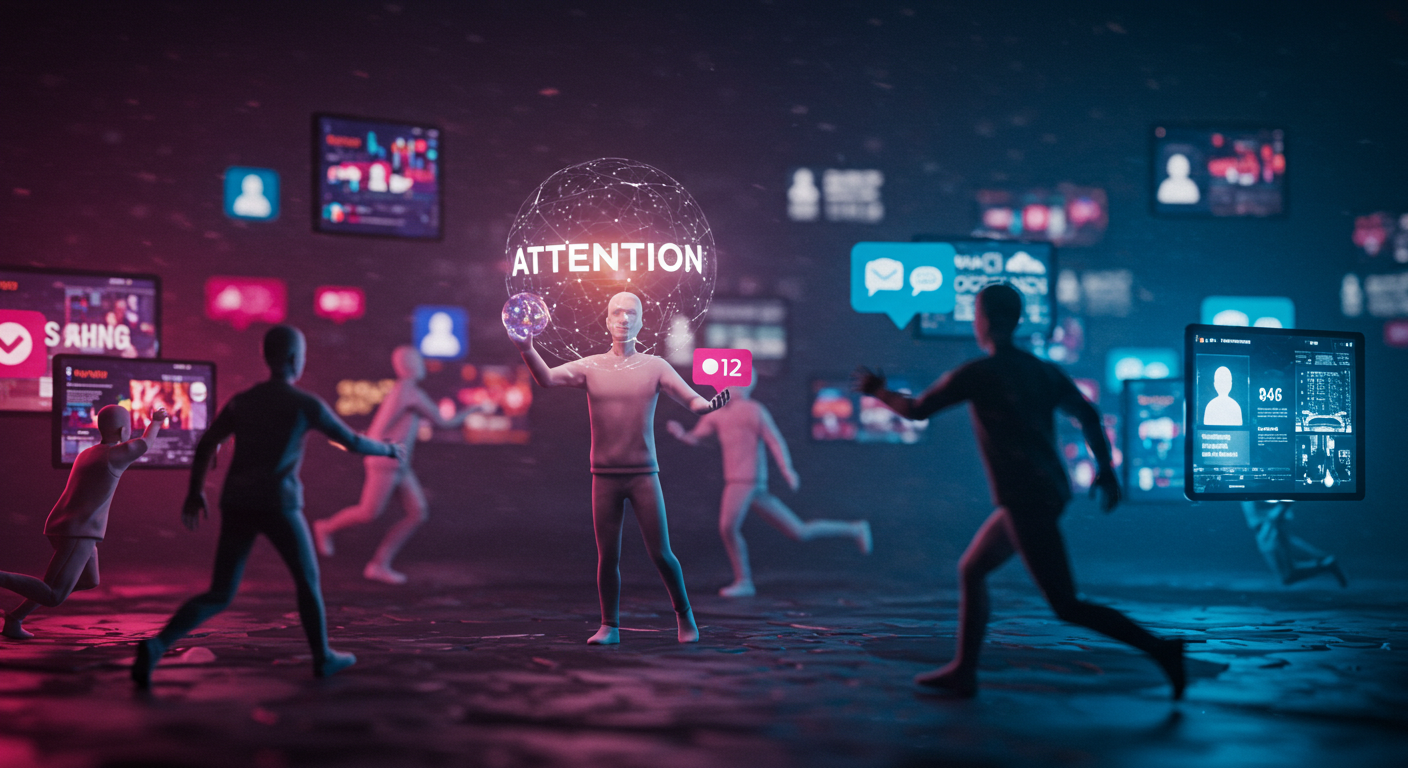By Mofeoluwa Awe
Somewhere between the first smartphone and the last viral TikTok, something quietly shifted. The rules of the game changed, and the players had to evolve or be forgotten. For decades, brands focused on being seen. Now, they must be chosen. And in today’s saturated digital world, where algorithms shape habits and screens demand every ounce of our mental energy, attention, not awareness, has become the most powerful currency.
In the traditional economy, goods were bought, sold, and stored. In the attention economy, seconds are traded, moments are monetized, and distraction is a debt most brands can’t afford.
Yet even in this chaotic marketplace of noise and novelty, one truth remains constant, brands that connect still win.
“You don’t just sell a product anymore. You sell a reason to care. And if you can’t capture attention in the first 3 seconds, you’ve already lost.”
That isn’t exaggeration. It’s science.
Psychologists have long defined attention as the process of selectively concentrating on one aspect of the environment while ignoring others. From selective to sustained, from divided to alternating, attention isn’t just a click, it’s a cognitive real estate. It’s influenced by age, environment, even technology, and right now, it’s harder to earn than ever.
Which is why today’s brand builders aren’t just marketers, they’re memory-makers.
Research from Adobe and Lucidpress found that brand consistency alone can increase revenue by up to 23%. 50% of consumers are more likely to buy from a brand they recognize. And 81% need to trust that brand before they’ll even consider a purchase.
So, how do you earn trust in an era of swipes, skips, and scrolls?
You tell the truth, and you tell it often.
“Authenticity is no longer a luxury, it’s a requirement. People are choosing vibes over value now and not because they don’t care, but because they’re overwhelmed. When everything looks polished, the raw and real stands out.”
And the numbers back it up. 88% of consumers say authenticity is the reason they stick with a brand. 74% say they become loyal after engaging consistently with a brand’s online content/ and perhaps most telling of all, 59% say user-generated content feels more real than anything a marketing team could dream up in a boardroom.
It’s not about looking perfect anymore. It’s about feeling real.
Take a stroll through Nigeria’s bustling landscape and you’ll see it in motion. On one side, a new brand launches a meticulously designed campaign. On the other, a Gen Z creator throws up a raw, funny review and it racks up more traction than the campaign itself. In the attention economy, speed and sincerity often outweigh strategy.
Still, that doesn’t mean traditional branding is obsolete, far from it.
Colour matters. Consistency matters. And in fact, using a signature colour can increase brand recognition by 80%. 55% of first impressions are visual. These aren’t just stats, they’re psychological triggers. The mind remembers what it sees often, and what it feels something about.
This is why branding isn’t just about identity anymore, it’s about psychology. About understanding how people think, what makes them pause, what makes them return.
Influencer marketing once considered a niche, is now a $21 billion global industry. 34% of brands are actively running influencer campaigns, and that number is growing. Why? Because attention is personal now. People don’t trust ads. They trust people. And people trust people.
That’s why personalization is becoming a pillar in modern brand building. 27% of consumers consider it essential for loyalty. Whether it’s receiving a DM from a brand you follow, or seeing content that feels tailored to your experience, personalization created proximity. And proximity creates preference.
Still, let’s not confuse attention for affection.
“Getting someone to notice you isn’t the same as getting them to care. Clickbait dies fast. What endures is meaning.”
Meaning is the new metric. And it’s measured in how many people are willing to stay, return, and advocate. It’s measured in how brands show up, not just during product launches, but in culture, in values, in community.
The brands that succeed in this era are the ones that merge strategy with soul. They don’t just post, they converse. They don’t just show up during sales, they’re present all year round. They create campaigns that become culture. Billboards that become questions. Slogans that become street slang.
Think: Who dey breeet?
A mysterious, logo-less billboard lit up Lagos for days. People speculated endlessly. Was it a show? A protest? A meme? It was in fact, a drink. But more than that, it was a masterclass in mystery marketing. It proved that attention isn’t always taken, sometimes, it’s invited.
So, where does this leave us?
It leaves us at the intersection of creativity and neuroscience. Of consistency and curiosity. In an age where the human attention span is shorter than that of a goldfish, eight seconds, according to a 2022 Microsoft study, brands must become architects of the unforgettable.
Because if you can’t capture attention, you can’t earn trust.
And if you can’t earn trust, you don’t have a brand, you have a logo.
In the attention economy, the race isn’t to the biggest spender or the loudest voice, it’s to the most international storyteller. The one who understands that in the age of infinite noise, silence can be a strategy. That mystery can be marketing. And marketing, not media, is what turns audiences into advocates.
Welcome to the new era of brand building.
It begins with attention.
It ends with trust.
Read also: Why brands deserve a place on the balance sheet







Comment
No comments found.